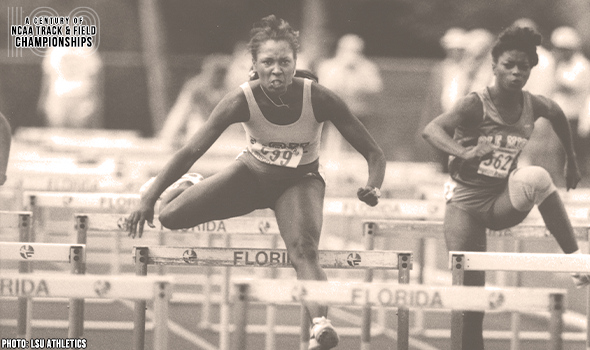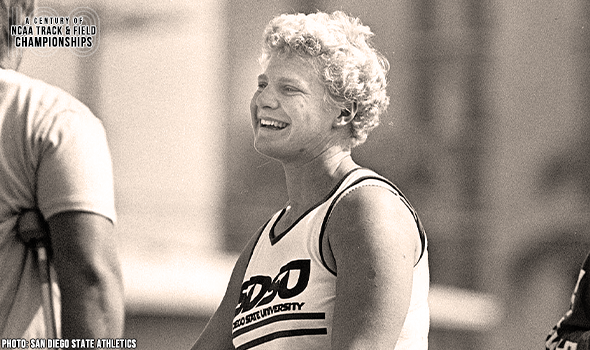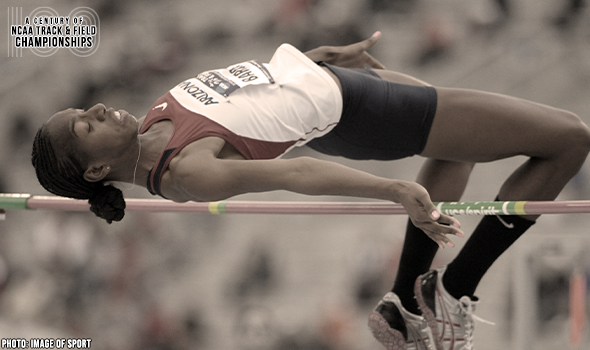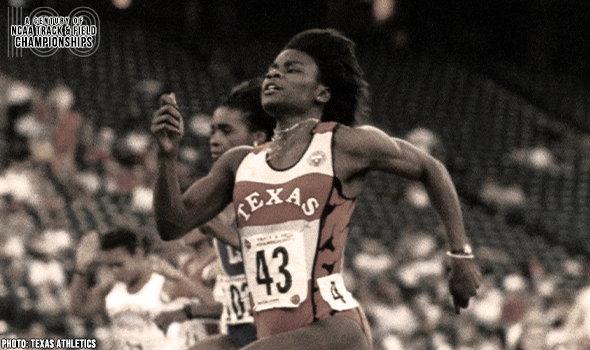
Stanford Romped To National Title in 1928
How good was Stanford’s 1928 NCAA championship team?
The Cardinal’s 72 points more than doubled the total of its closest challenger.
Stanford also had five different athletes win individual titles: That’s a combination no other program has yet matched in the same meet.
Adding to the impressiveness, all five of the Cardinal’s individual champions that year were (or would become) world record setters and/or Olympic medalists, and no points were scored by a sixth athlete with that same illustrious distinction.
Bud Spencer was captain of the squad and scored Stanford’s only points on the track, winning the 440 yards in a meet record 47.7. Spencer, who had broken the 400-meter world record at 47.0 a month earlier, had the fastest split on the U.S. 4×400 quartet that won gold with a world record in the 1928 Olympics later that summer.
Also setting a meet record – two, in fact – was pole vaulter Ward Edmonds with a final height of 13-6½ (4.13m). Earlier in the year, Edmonds had equaled the world record and became history’s third-ever 14-footer. Edmonds, who in 1929 became the first repeat NCAA vault champion with a co-title (and another MR at 13-8¾ or 4.18m), died suddenly in 1930 from polio at age 22.
Robert King won the high jump at 6-4½ (1.94m) and afterward was allowed to continue jumping, scaling a PR 6-6½ (1.99m). A month later, King would only need just 6-4¼ to earn the gold medal at the Olympics in Amsterdam.
Stanford could have won the meet just in the throwing events, where they earned 34 points (team runner-up Ohio State had 31), led by sophomore Eric Krenz with 18.
It was Krenz who actually got Stanford’s celebration started early, setting a meet record in the discus qualifying on the first day. His MR 149-2 (45.48m) carried over the next day to win the final and he added a runner-up effort in the shot put, losing to teammate Harlow Rothert.
For Rothert, another sophomore, it was the first of three-straight shot put titles to become the meet’s first three-time champion in a field event (Krenz was second each time). Both throwers were Olympians, though only Rothert would earn a medal – silver in the shot put in 1932, by which time teammate Krenz – a three-time world record setter in the discus – had died in a boating accident at age 25.
Not even scoring for Stanford was Ross Nichols, who finished sixth in the 120-yard hurdles but was disqualified for knocking over a hurdle. A month later, Nichols earned a similar DQ in the Olympic Trials 110-meter hurdles, in which he equaled the world record of 14.8 in the semifinals without knocking over any barriers.
The NCAA and collegiate track & field will mark a momentous milestone in the spring of 2021 -- the 100th anniversary of the NCAA Championships and with that, the NCAA Track & Field Championships. In June 1921, the University of Chicago hosted the first track & field championships in NCAA history.
This point can’t be emphasized enough: Not only was the event the first for NCAA track & field, but the first championships for any sport under the sponsorship of the NCAA.
To celebrate, over each of the next 365 days, the U.S. Track & Field and Cross Country Coaches Association (USTFCCCA) will celebrate moments, student-athletes, and coaches that have made a century’s worth of championships special. From humble beginnings to important historical milestones to the modern-day, collegiate track & field has evolved with the American society.
The 2021 edition of the NCAA Division I Outdoor Track & Field Championships begin with preliminary round action on May 27-29 in Jacksonville, Fla., and College Station, Texas. The championships final site and culmination of the celebration is slated for June 9-12, 2021 at the newly rebuilt Hayward Field in Eugene, Ore.

O-H-I- … Oh, What A Race By Davis!
Glenn Davis of Ohio State set a WORLD RECORD in the 440 yards at the 1958 NCAA Outdoor Track & Field Championships!

LSU Hurdle Dominance Yet To Be Matched
Tananjalyn Stanley set a meet record of 12.70 in the 100 Hurdles at the 1989 NCAA DI Outdoor T&F Championships, which jump-started LSU’s dominance in the event over the next few years.

Anchors Aweigh! Navy Wins NCAA Team Title
Back in 1945, the United States Naval Academy (Navy) won the team title at the NCAA Outdoor Track & Field Championships!

Pagel Won Shot Put With Record Heave
Ramona Pagel won the shot put at the 1985 NCAA Division I Outdoor Track & Field Championships with a meet record heave!

Eyestone Held Nothing Back At NCAAs
Ed Eyestone of BYU won three career titles at the NCAA Division I Outdoor Track & Field Championships, including a 5K-10K double in 1985!

Barrett Scared Long-Standing MR In 2013
Katrena Johnson set a collegiate record in the high jump at the 1985 NCAA Division I Outdoor Track & Field Championships and led a 1-2-3 Arizona sweep!

Bell Rang True In Long Jump
Greg Bell won back-to-back long jump titles at the NCAA Outdoor Track & Field Championships and broke a meet record in 1957!

Guidry Capped Legendary Career In 1991
Carlette Guidry, who won 12 NCAA titles in her career, completed the 100-200 sweep in 1991.

Stanford Romped To National Title in 1928
Stanford won the team title at the 1928 NCAA Outdoor Track & Field Championships with a then-meet record score of 72 points. Eric Krenz (pictured) led the way with 18 team points.

Smith Jumped Her Way Into Elite Company
Trecia-Kaye Smith won three career titles at the NCAA Division I Outdoor Track & Field Championships with two of those in the long jump, another in the triple jump.

